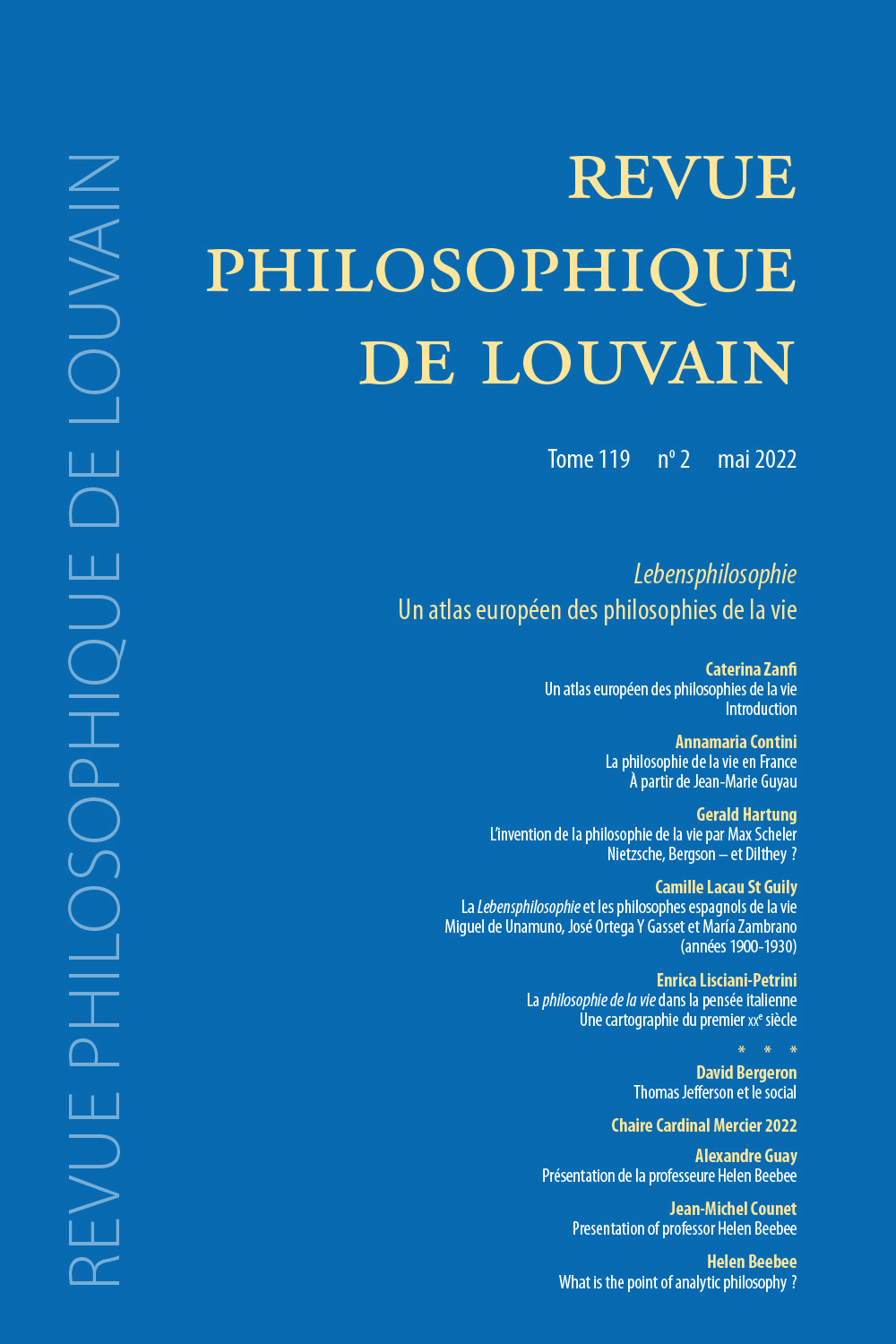 previous article in this issue previous article in this issue | next article in this issue  |

Preview first page |
Document Details : Title: Intentionnalités, ontologies: quel Aristote en héritage? Subtitle: Esquisse d'une cartographie militaire Author(s): MAJOLINO, Claudio Journal: Revue Philosophique de Louvain Volume: 114 Issue: 3 Date: août 2016 Pages: 485-546 DOI: 10.2143/RPL.114.3.3194449 Abstract : Cet essai expore l’idée selon laquelle les différentes modes de concevoir l’intentionnalité issues du débat contemporain relèvent de deux manières diverses de comprendre l’articulation entre intentionnalité et ontologie. La première, celle analytique, a comme point de départ une conception de l’intentionnalité inscrite dans un questionnement ontologique dont la forme canonique est condensée par la formule ramassée de Quine : «what is there?» dont l’origine est dans la question aristotélicienne du «εἰ ἔστι». L’intentionalité analytique relève ainsi d’un questionnement que l’on pourrait qualifier d’ontologie de l’esprit (y a-t-il des états mentaux ?). La deuxième, celle continentale, est issue d’une conception de l’intentionnalité où l’ontologie de référence est résumée par la formule de Heidegger: «was besagt 'Sein'?» dont l’origine aristotélicienneest plutôt dans la question du «τί τὸ ὄν ᾖ ὄν». Elle ne relève donc pas d’une ontologie de l’esprit, mais d’une analytique de l’existence humaine (ou de l’une de ses variantes) aux prises avec le problème de la «transcendance». À l’aide de quelques exemples paradigmatiques l’auteur essaye en outre de montrer comment ces deux conceptions de l’intentionnalité, chacune à partir de son arrière-fond ontologique propre, ont pu penser rétrospectivement leur prétendu héritage aristotélicien. La voie analytique, par la médiation de Brentano, s’est notamment concentrée sur De An. B 5 et sur la doctrine aristotélicienne de l’αἴσθησις; celle continentale, par la médiation de Heidegger, a suivi d’autres chemins dont l’un notamment conduit aux pages de Met. Θ 10 et au traitement aristotélicien de l’ὂν ὡς ἀληθές. This essay explores the idea that the different modes of conceiving intentionality resulting from the contemporary debate arise from two different ways of understanding the articulation between intentionality and ontology. The first or analytic way sets out from a conception of intentionality arising from an ontological questioning, the canonical form of which is condensed in the compact formula of Quine: «what is there», the origin of which is to be found in Aristotle’s question «εἰ ἔστι». Analytic intentionality thus depends on a questioning which one could call ontology of mind (are there mental states?). The second or Continental way arises from a conception of intentionality, in which the ontology referred to is summed up by Heidegger’s phrase: «was besagt 'Sein'?», the Aristotelian origin of which is rather to be found in the question: «τί τὸ ὄν ᾖ ὄν». Thus it does not depend on an ontology of mind, but an analytic of human existence (or one of its variants) at grips with the problem of «transcendance». With the aid of some paradigmatic examples the author attempts furthermore to show how these two conceptions of intentionality, each on the basis of its own proper ontological background, have been able to think retrospectively their alleged Aristotelian heritage. The analytical way, through the mediation of Brentano, has concentrated particularly on De An. B5 and on Aristotle’s doctrine of αἴσθησις, whereas the Continental way, through the mediation of Heidegger, has followed other paths, one of which in particular leads to the pages of Met. Θ 10 and to Aristotle’s treatment of the ὂν ὡς ἀληθές. |
|


